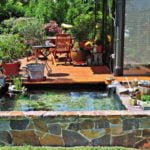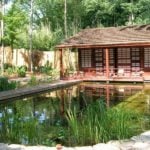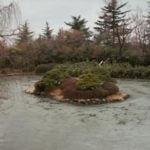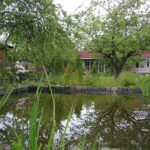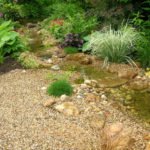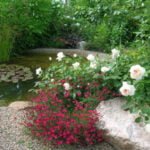Since the vegetable beds on the garden plots began to lose ground, giving way to flower beds, the pond in the garden has become a sign of good taste. Fashion, a very brusque person, invades all areas of our daily life, and more often we meekly submit to its dictates. Modern materials greatly facilitated the process of creating a reservoir and provided almost unlimited opportunities for the realization of their own fantasies, so ponds began to appear everywhere, just like mushrooms after rain.
However, in our case, the situation was different. The ponds were not a whim or a fashion statement. Low swampy areas needed to be drained, and the ponds in the garden were designed to drain away excess moisture, that is, they acted as an analogue of the usual drainage ditch. The first small pond was dug by hand. The oblong pit, measuring a meter by two and a half, filled with water quite quickly without our help. Inspired by the success, we called for the help of the equipment and dug a pit in the most swampy place of the site, the depth of which reached almost three meters.
The result exceeded all expectations. First, it has become much drier not only in our own possessions, but also in our neighbors, who are also concerned about the problems of land reclamation. Secondly, the extracted soil allowed to raise the level of the site without additional costs. And third, we have become the lucky owners of two natural reservoirs.
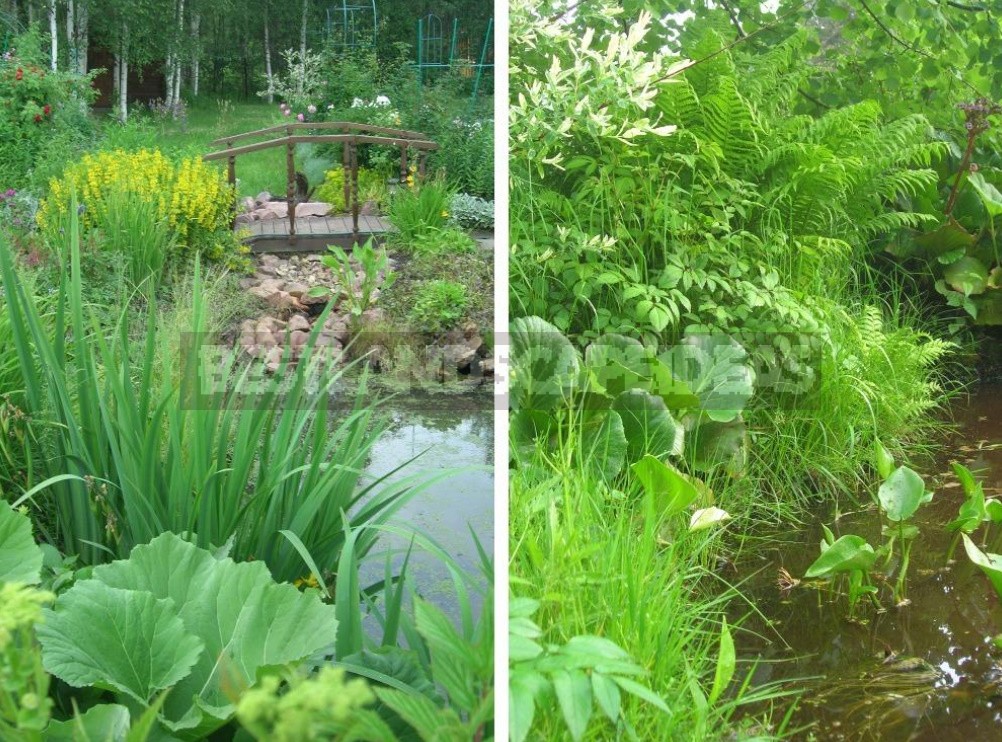
The prospects before me excited my imagination, and I enthusiastically began to explore the coastal area, completely unaware of the difficulties I would have to face. At that time, my acquaintance with garden ponds was limited to the use of a ready-made plastic mold, so most of the wisdom had to be learned in practice. Fortunately, unexpected problems could not outweigh the advantages of a natural pond, and today we do not regret the decision we once made.
Comfort zone for moisture-loving plants
A natural pond is first of all a great opportunity to grow water-loving plants almost without any effort. Most of them are very beautiful, however, placed in an ordinary flower garden, they need frequent watering, which is not always feasible. The wet shore of the pond allows them to thrive, and the owners will never be visited by obsessive thoughts about the need to leave all other things and run headlong to their pets to quench their thirst. Moreover, you can go on vacation with a clear conscience, without fear that on your return you will find cold, or rather, dried “corpses”in the garden.

Hemerocallis, Tradescantia, Iris sibirica, Eupatorium and many other plants with similar requirements, being planted in the coastal zone, will please you with such a lush flowering, which will be very difficult to achieve in less suitable conditions.
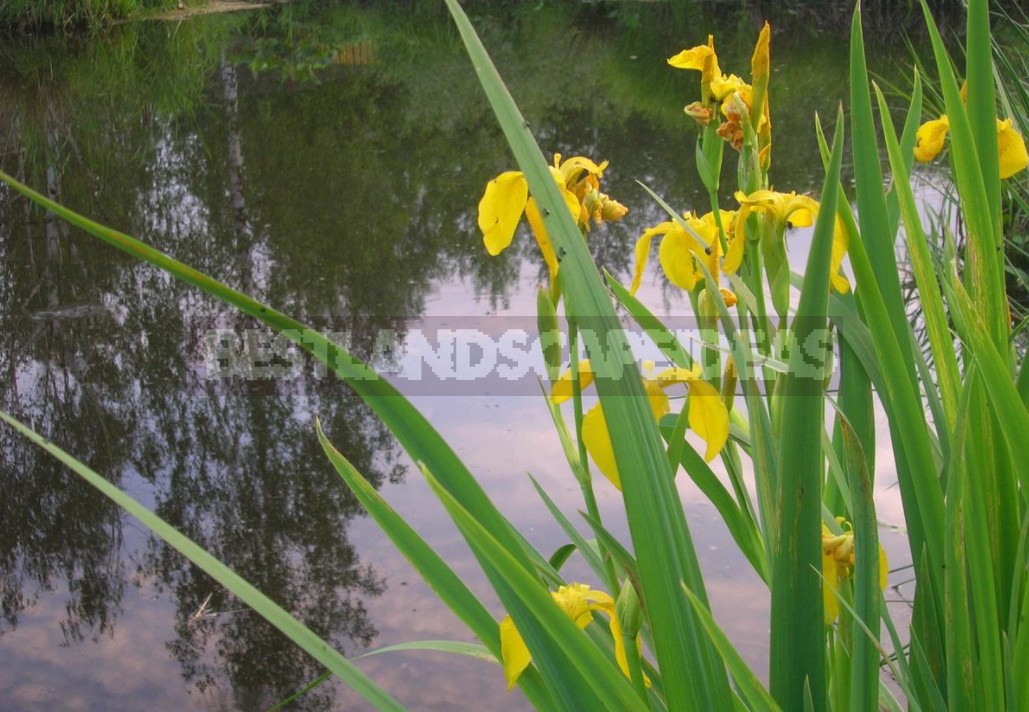
Everyone’s favorite Astilbe prefers shaded corners of the garden. However, in the absence of a suitable place, they can safely land on the shore directly under the scorching rays of the sun, and they will feel much better than in the dry shade. I was convinced of the justice of this by my own experience. The same applies, for example, to the varieties of Вrunnera macrophylla, some varietal varieties of Hosta and Primula japonica.
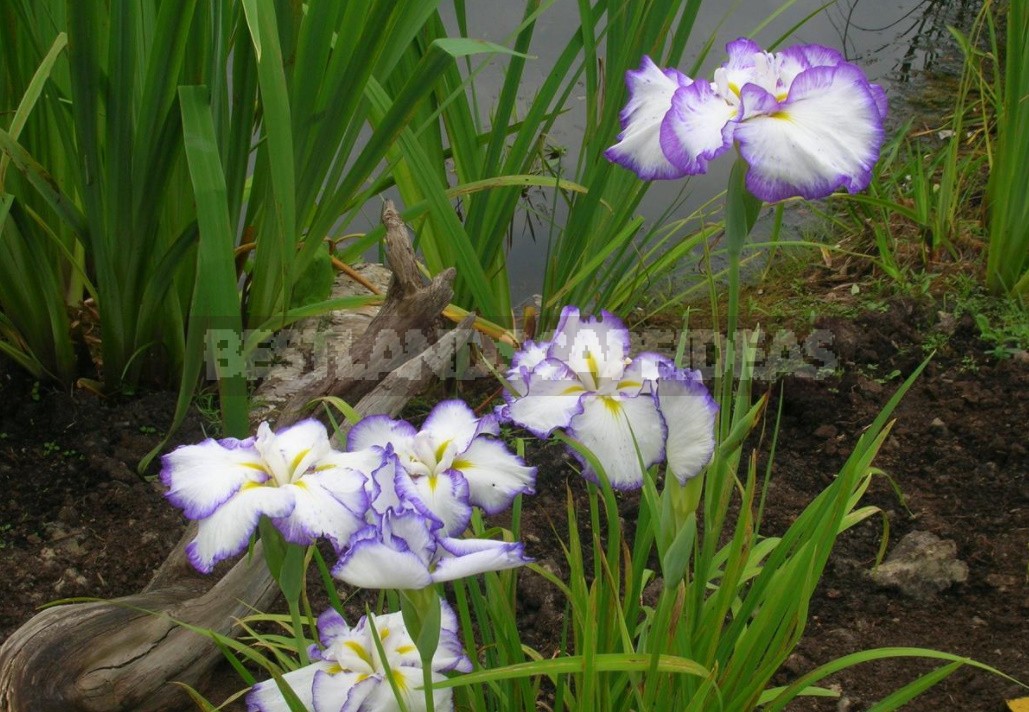
Wet, flooded in spring, the coast allows you to enjoy the company of such beauties as hybrids Iris ensata. For these plants, the coastal zone is a place of natural growth. Here they can fully demonstrate their exotic, incomparable beauty.
The pond on the site leads to an increase in air humidity, and, therefore, to the creation of a special microclimate favorable for many garden plants. First of all, for rhododendrons, which often suffer from dry air. If you plant them near the pond, while observing all the other requirements of agricultural technology, they will be in comfortable conditions and will not be slow to thank the owners with an enchanting bloom.
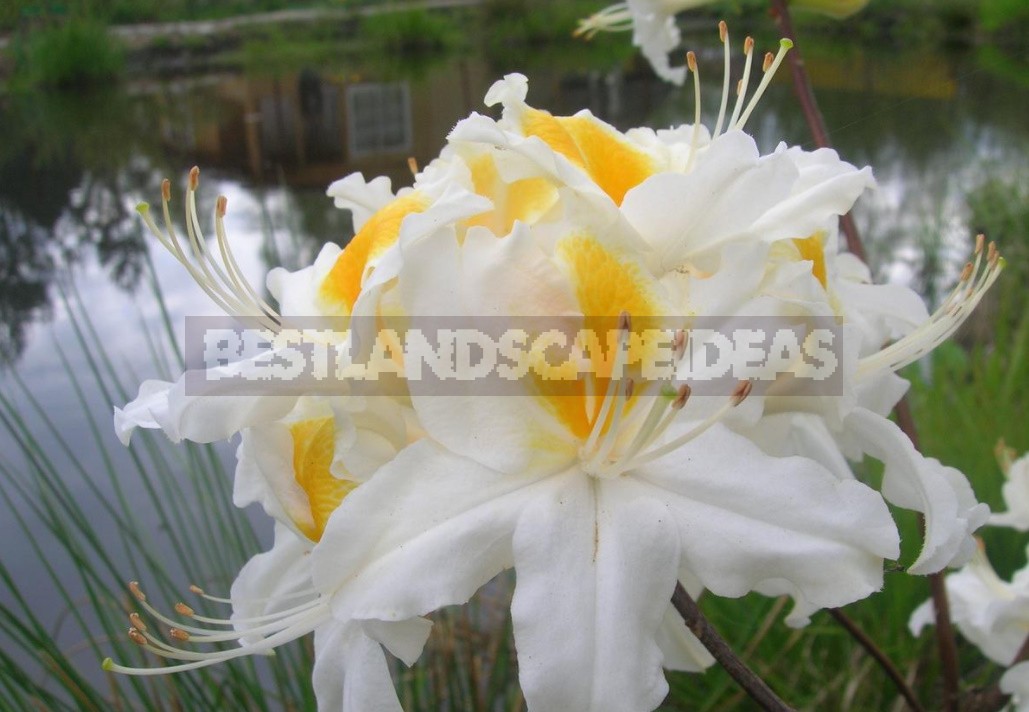
Disadvantages of coastal landings and ways to overcome them
Unfortunately, coastal landings have their drawbacks. In early spring, when the flower beds need to be cleaned as quickly as possible, removing all the accumulated garbage over the winter, it is quite difficult to do this. An artificial pond allows you to approach the water’s edge without hindrance. On the shore of the natural there is a risk of getting bogged down to the ankles and deeper. The work has to be postponed until the pond finally returns to its banks after the spring flood, and the excess moisture leaves the soil. In order for the plants in this situation not to interfere with last year’s foliage, it is better to cut it in the pre-winter, and, therefore, the volume of autumn work automatically increases.
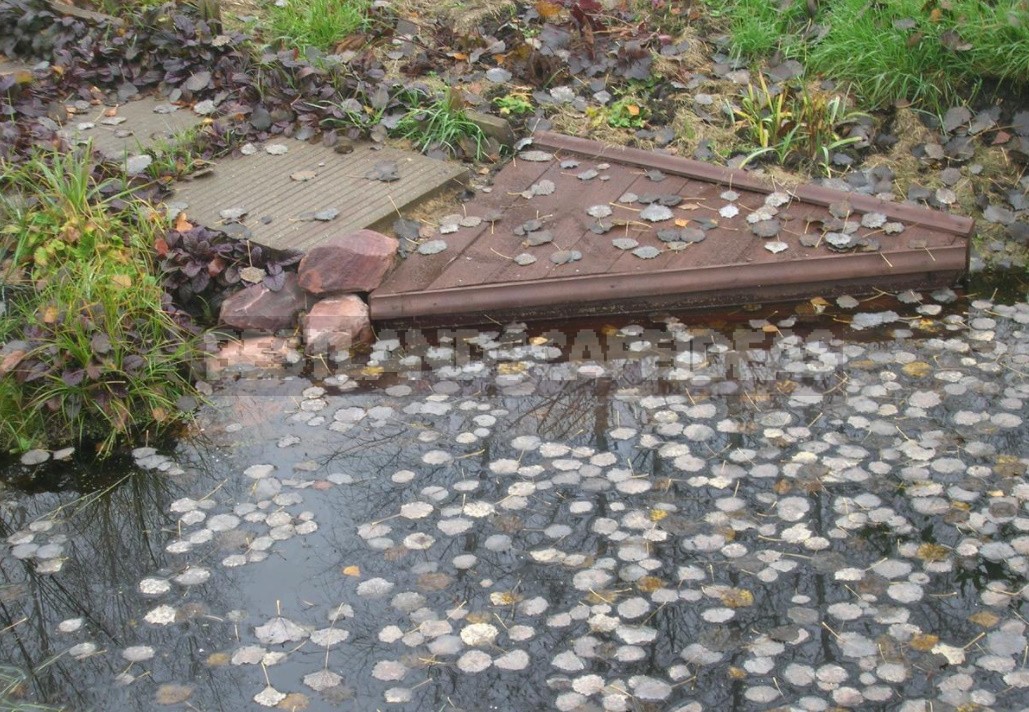
Weeds in the coastal zone
By the time the beach is dry enough to allow you to step on it safely, you must immediately declare war on the weeds. Lost time can lead to disastrous consequences, because in the coastal zone you have to deal with particularly malicious aggressors, before which even Aegopodium podagraria and Elytrigia repens pale.
Carex, Phragmites australis, Typha latifolia and Lysimachia vulgaris legitimately consider themselves the owners of these places and therefore behave extremely unceremoniously. If you give them a break, then after a short time it will be very difficult to get rid of these self-confident impudents due to the peculiarities of the structure of their root system and the extremely high rate of growth.

But the biggest trouble can be caused, perhaps, by Scirpus radicans. Its long shoots are able to give roots even in the water, so a new generation of aggressors have to be literally caught before they have time to “feel the ground under their feet”. In a small pond, it is not very difficult to do this, but in a large and deep pond, reeds turn into a serious problem and threaten to swamp.
On the shore of the pond, the fight against weeds is like a war, because it is a life-and-death struggle throughout the season. If a temporary truce can be concluded in other parts of the garden by the end of July, then at the edge of the reservoir the battles do not stop until the onset of persistent cold weather.

